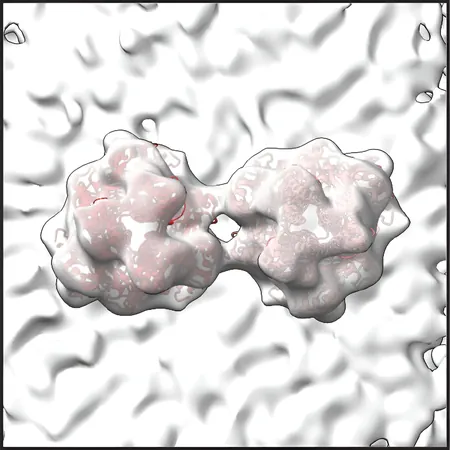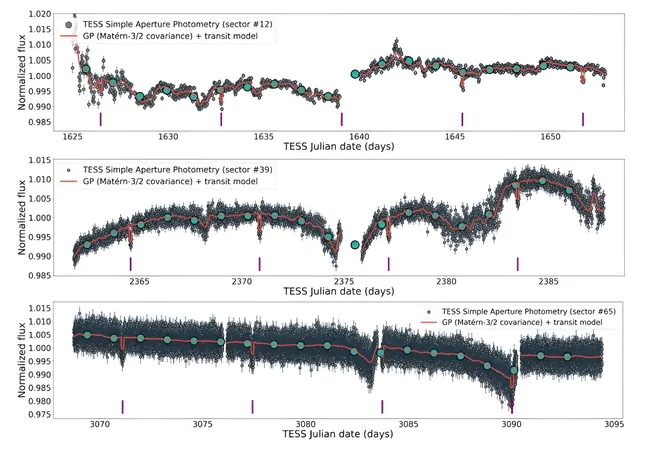
Groundbreaking Map of Fruit Fly Brain Neurons Revealed - What It Means for Neuroscience!
2024-10-02
Groundbreaking Map of Fruit Fly Brain Neurons Revealed - What It Means for Neuroscience!
In a remarkable scientific breakthrough, researchers have unveiled the first comprehensive wiring diagram of every neuron in an adult fruit fly's brain, showcasing an astounding 50 million connections. This monumental achievement was accomplished by an international team known as the FlyWire Consortium, bringing together experts from institutions such as the MRC Laboratory of Molecular Biology in Cambridge, Princeton University, the University of Vermont, and the University of Cambridge. The findings have been published in two groundbreaking papers in Nature.
This detailed map includes a total of 139,255 neurons and marks a pivotal milestone in efforts to understand complex brains—far exceeding previous projects that only mapped simpler nervous systems, such as those of a fruit fly larva with 3,016 neurons and a nematode worm with merely 302 neurons. Dr. Gregory Jefferis, co-leader of the research from the MRC Laboratory, stated, 'To grasp how brains function, we need insights into how all neurons interconnect to facilitate thoughts and actions. Currently, we lack a thorough understanding of these networks in most brains.'
The map of the fruit fly brain is particularly significant as it lays groundwork for addressing the wiring patterns of larger brains. Given the fruit fly's extensive use in biological research, this breakthrough could catalyze a revolution in our understanding of neural circuits and their functions.
Dr. Mala Murthy, another co-leader from Princeton, emphasized the open-access nature of the findings, 'We’ve made the entire database available to researchers globally, which we hope will significantly enhance the field of neuroscience. It’s crucial for comparing healthy brain functions to those impacted by mental health disorders.'
Intriguing Findings and Future Implications
One surprising conclusion drawn from this research is the discovery of considerable similarities in neuron wiring across individual fly brains, challenging the notion that each brain is a unique entity. Comparisons with smaller brain mappings revealed that approximately 0.5% of neurons display developmental variations that may lead to mis-wired connections. This raises fascinating questions about individuality and potential links to brain disorders that warrant further investigation.
To construct the fly brain map, researchers utilized advanced imaging technology, beginning with a female fly brain that was meticulously sliced into 7,000 sections, each measuring just 40 nanometers thick. The project analyzed over 100 terabytes of data—an amount so vast it would be unmanageable without the aid of artificial intelligence. The collaborative effort extended across 76 laboratories and included 287 researchers, alongside numerous public volunteers, dedicating around 33 person-years to meticulously validating the data.
Dr. Sebastian Seung from Princeton remarked, 'Thanks to AI advancements, mapping the complete brain structure became feasible—an endeavor that would have been insurmountable manually.' He pointed out that this monumental fly brain mapping is merely the first step toward constructing a wiring diagram for the entire mouse brain, potentially opening avenues for understanding mammalian brain networks as well.
A Bright Future for Neuroscience
The researchers have not only assembled a detailed neuron map but have also annotated over 8,000 distinct cell types within the brain, enabling targeted studies on specific neurological systems—such as those responsible for vision and movement. Dr. Philipp Schlegel added, 'This dataset is akin to providing a detailed Google Maps for brains; it's essential to know the wiring paths and label them for efficient navigation through their complexities.'
The mapping achievement also signifies the first full brain wiring diagram—termed a connectome—that predicts neuron connection functions. Neurons communicate by sending electrical signals through synapses. Using AI, the team classified these synapses into excitatory and inhibitory types, crucial for understanding brain function. Dr. Jefferis said, 'To digitally simulate brain functions, we need a comprehensive grasp of the structures and signaling processes involved.'
In a fascinating twist, the research yielded critical insights into how fly brains respond to external stimuli, marking only the beginning of innovative simulation projects. Associate Professor Davi Bock highlighted the challenges posed by high-resolution data, stating that the algorithms developed during the research pave the way for a deeper understanding of how nervous systems process and store information.
This research currently focuses on a female fly brain, but due to inherent structural differences in male and female neuron architecture, future studies aim to explore the male brain wiring as well.
With the rapid advancements in mapping brain structures, the implications for understanding both healthy brains and those with disorders are profound. As researchers continue to analyze and simulate neural functions, the floodgates may soon open to uncharted territories of neuroscience and mental health, offering tantalizing glimpses into the complex workings of the brain.
Stay tuned for more astonishing discoveries in the world of neuroscience!









 Brasil (PT)
Brasil (PT)
 Canada (EN)
Canada (EN)
 Chile (ES)
Chile (ES)
 España (ES)
España (ES)
 France (FR)
France (FR)
 Hong Kong (EN)
Hong Kong (EN)
 Italia (IT)
Italia (IT)
 日本 (JA)
日本 (JA)
 Magyarország (HU)
Magyarország (HU)
 Norge (NO)
Norge (NO)
 Polska (PL)
Polska (PL)
 Schweiz (DE)
Schweiz (DE)
 Singapore (EN)
Singapore (EN)
 Sverige (SV)
Sverige (SV)
 Suomi (FI)
Suomi (FI)
 Türkiye (TR)
Türkiye (TR)